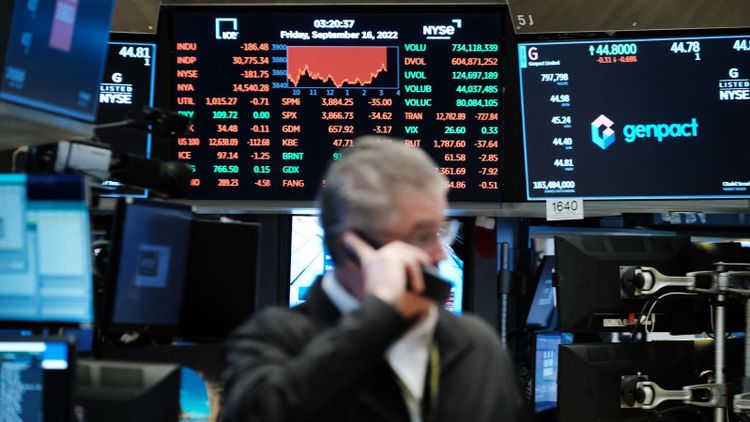S&P 500, Nasdaq Sink To Lowest Levels Since May As Crash Fears Linger

The main American stock indexes finished a turbulent day of trading on Monday at their lowest levels in months, as global markets show signs of worry.
Monday was not a good day for people who invest in stocks for a long time.
The leading S&P 500 and tech-heavy Nasdaq Composite indexes finished Monday at their lowest points since the beginning of May, while the smaller Dow Jones Industrial Average closed at its lowest level since the middle of June.
After the stock market went down, the S&P 500 had its biggest drop on Monday since September 2022, the Nasdaq fell by 3.4% which was its largest decline since July 24, and the Dow Jones Industrial Average dropped by 2.6%, marking its biggest decrease since September 2022. The Dow's 1,033-point loss was also its largest point drop since 2022.
Significantly, the CBOE Volatility Index (VIX), also referred to as the fear gauge on Wall Street, soared to its highest point on Monday since October 2020, marking the start of a significant decline in stock prices that year. This suggests that traders are feeling a high level of anxiety about the movement of stock prices.
Darrell Cronk, the chief investment officer at the Wells Fargo Investment Institute, stated in a message to clients that it will be a while before markets stabilize during this uncertain and turbulent time. He mainly pointed to the recent selloff as a result of the unwinding of leveraged trades. This involves groups borrowing money in Japan to buy stocks in other countries, as Japan's central bank moves away from its long-standing policy of keeping interest rates close to zero.
The Nasdaq has continued to decline, now down 13.1% from its highest closing point on July 10, which puts it in the 10% correction zone since Friday. Meanwhile, the Dow and S&P, which have less exposure to technology, are close to entering a correction. The Dow is currently down 6.1% from its peak on July 17, while the S&P is down 8.5% from its highest point on July 16.
"Jamie Cox, the managing partner of Harris Financial Group, noted that there is a lot of negativity in the air. Besides the usual reasons for concern such as the weakening "carry trade" from Japan and a struggling job market in the U.S., Cox also highlighted the unpredictable global currency market, uncertainty surrounding central banks, increasing violence in the Middle East, and the chaotic U.S. presidential election as reasons why investors are feeling pessimistic."
3.5 trillion dollars. That is the amount of market value that the 500 companies listed on the S&P lost on Monday, as reported by FactSet data.
Uncovering The Unknown
What is needed to halt the decline in the stock market. Principal Asset Management's chief global strategist, Seema Shah, stated in an email that a lasting market rebound requires a trigger, such as a stabilizing Japanese yen, impressive earnings reports, and positive economic data. The sell-off will likely end when leveraged trades are completed and exhausted, leading to possible additional short-term losses, according to Cronk.
Title: Trump Points Finger at Harris for Market Drop in Forbes' 'Kamala Crash' Article by Sara Dorn In the blog post titled 'Kamala Crash' on Forbes, President Trump is quoted as blaming Vice President Harris for the recent downturn in the stock market. Sara Dorn authored the post, highlighting Trump's accusations against Harris.
Big technology companies are struggling as the Magnificent Seven lose over $1 trillion in value. Apple and Nvidia stocks are experiencing their worst days since 2020.
The richest people in the world saw big losses on Monday as the stock market took a hit.
You can find me on Twitter or LinkedIn. Share confidential information with me through a secure tip.



















































